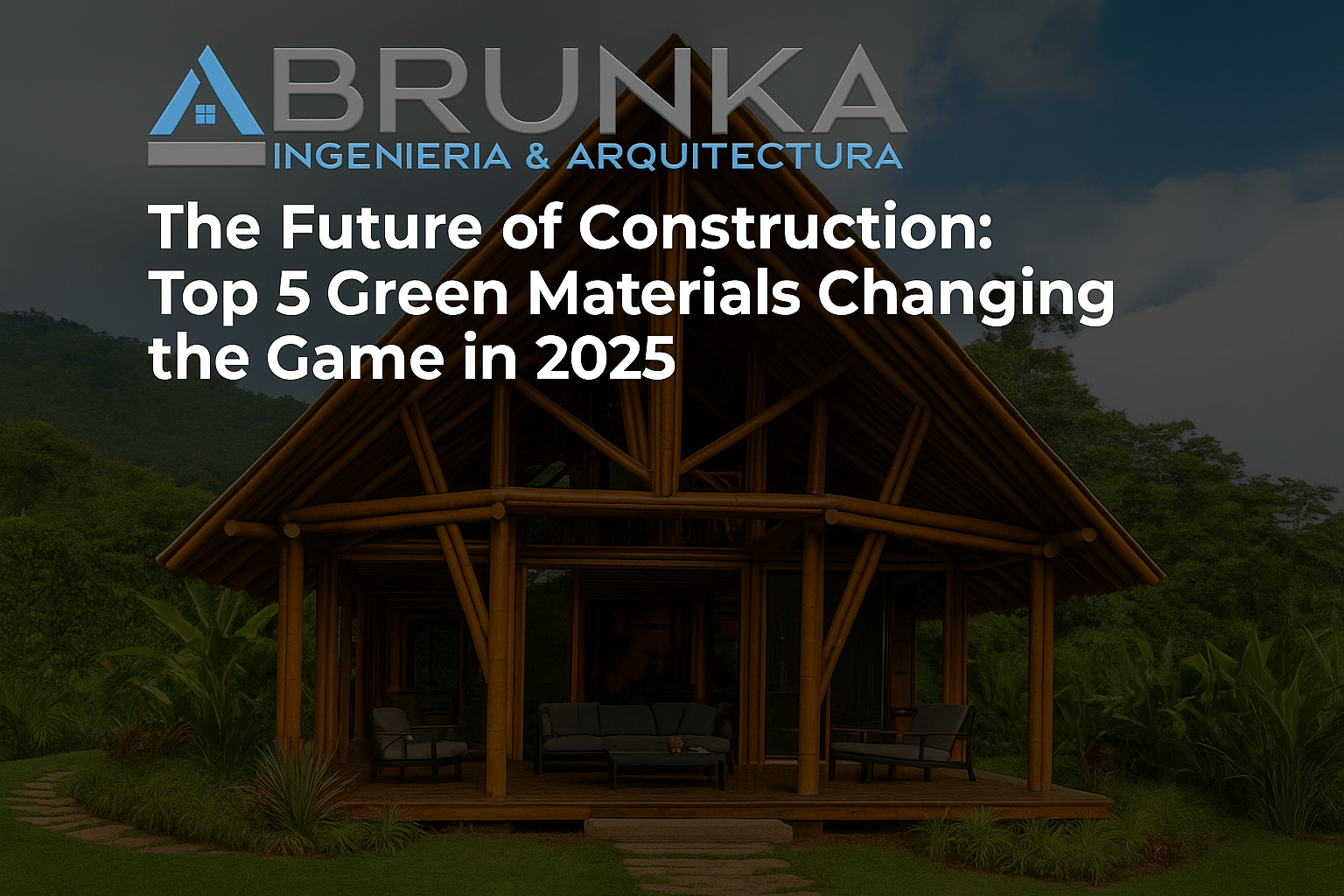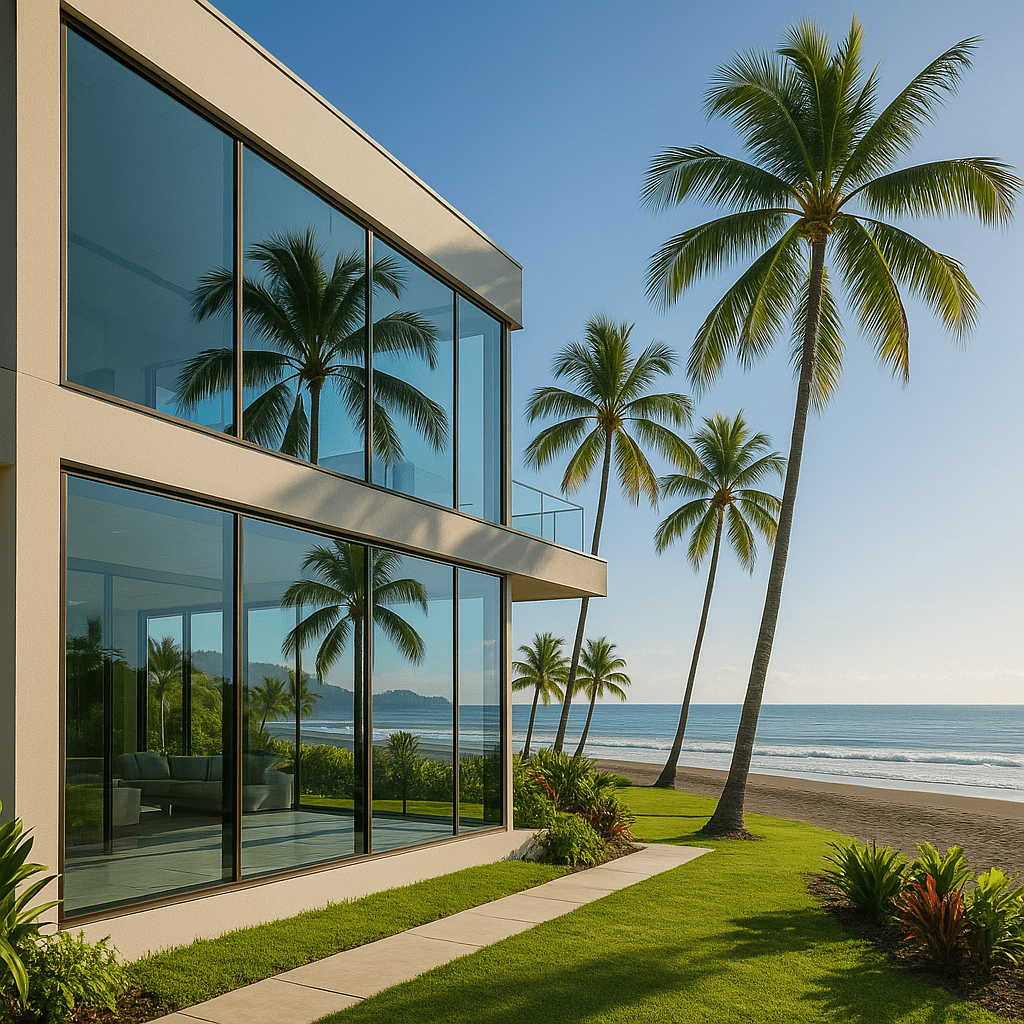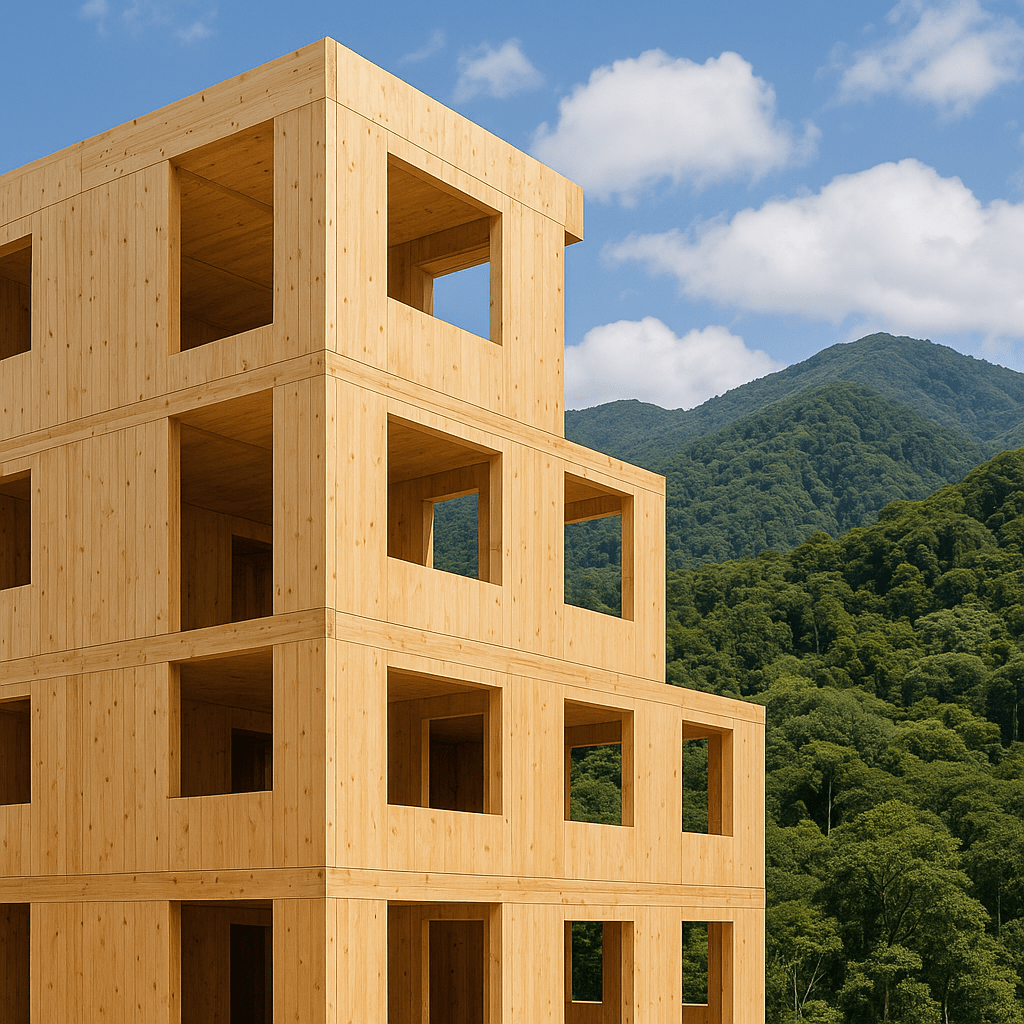
The Future of Construction: Top 5 Green Materials Changing the Game in 2025
Summary
- Costa Rica is setting benchmarks in green building with bamboo, hempcrete, recycled concrete, solar glass, and CLT leading the way.
- Bamboo in Guanacaste and Central Valley provides strength, beauty, and FSC certification, making it ideal for eco-luxury builds.
- Hempcrete in hot zones like Guanacaste cuts cooling needs by up to 40%, lowering costs and boosting comfort.
- CLT (Cross-Laminated Timber) is gaining ground in San José, offering earthquake resistance and low-carbon urban construction solutions.
- Recycled concrete & solar glass are transforming projects in Jacó and San José, helping secure LEED and EDGE certifications.
Why Costa Rica Leads the Green Construction Wave
Costa Rica isn’t just a tourism hotspot — it’s a pioneer in sustainable architecture. With the government’s commitment to becoming carbon-neutral, real estate and infrastructure projects are under pressure to use materials that balance durability, cost-efficiency, and environmental impact.
In fact, developers working in regions like Guanacaste, Jacó, and the Central Valley increasingly highlight how innovative materials cut down on long-term cooling costs and strengthen property values.
1. Bamboo — Costa Rica’s Natural Steel
Bamboo is one of the fastest-growing renewable resources, and Costa Rica’s Central Valley has become a hub for bamboo construction. It’s lightweight yet stronger than many hardwoods, making it ideal for both structural and aesthetic purposes.
- In the Central Valley, bamboo-frame homes have achieved LEED certification thanks to reduced embodied carbon.
- In coastal areas, laminated bamboo is used for resorts, with results showing 25–30% faster build times compared to traditional wood.
Learn more about sustainable bamboo design here.
Because bamboo naturally absorbs CO₂, using it in construction contributes directly to carbon-neutral goals. In humid zones like Limón, it has proven resistant when properly treated.
2. Hempcrete — The Natural Cooling Solution
Hempcrete (a mix of hemp, lime, and water) is gaining traction in Costa Rica’s hotter zones like Guanacaste. Studies indicate hempcrete walls can cut air-conditioning demand by 30–45%, a game-changer in dry, hot microclimates.
Developers note that thermal performance is one of hempcrete’s biggest advantages, helping properties stay cooler without relying heavily on mechanical systems.
EDGE-certified projects in Costa Rica have documented energy reductions when bio-based materials are introduced.
3. Recycled Concrete — Circular Economy in Action
Concrete is unavoidable in construction, but Costa Rica is proving it can be recycled effectively. In urban centers like San José, developers are working with suppliers to repurpose demolition waste into new aggregate.
- This practice lowers raw material demand.
- It has also cut construction costs by 12–18% in some projects.
- Certified labs in Costa Rica ensure recycled concrete meets safety and structural standards.
Read about sustainable construction codes in Costa Rica.
Contractors cut material costs by 18% while maintaining compliance with Costa Rica’s Certification for Sustainable Construction (CSC)
4. Solar-Integrated Building Materials — Power and Protection
In coastal towns like Jacó and Tamarindo, solar-integrated roofing tiles and glass panels are becoming a game-changer. Instead of traditional panels mounted above the roof, these materials merge energy generation with sleek design.

A beachfront condominium in Jacó installed solar glass windows, generating 20% of its electricity demand while qualifying for Costa Rica’s Ministry of Environment and Energy (MINAE) solar incentives.
Owners report payback periods of 5–7 years, making it both eco-friendly and economically smart.
- Buildings with solar glass facades generate up to 20–25% of their energy demand.
- Owners reduce long-term dependency on grid electricity.
With Costa Rica’s high solar potential, adoption is expected to expand rapidly in commercial and hospitality projects.
5. Cross-Laminated Timber (CLT) — Modern Wood with Strength
Cross-laminated timber (CLT) is engineered from layers of wood glued at right angles, creating panels with incredible strength and stability. While traditionally imported, Costa Rica has started sourcing CLT through FSC-certified suppliers.
Developments in San José are beginning to integrate CLT for office buildings, citing:
- 40% faster installation than concrete.
- Excellent seismic resilience, critical for Costa Rica’s earthquake zones.

Explore CLT studies via MIT’s Sustainable Building Materials research.
CLT’s light weight allowed reduced foundation costs, especially beneficial in hilly terrains.
Certifications Driving Adoption
In Costa Rica, the following frameworks are shaping sustainable construction decisions:
- LEED Certification — widely recognized in commercial and luxury developments.
- EDGE Certification (IFC/World Bank) — popular in residential and hospitality projects for its measurable efficiency standards.
- Costa Rica’s Certification for Sustainable Construction (CSC) — a local program ensuring environmental compliance.
These certifications give investors confidence while boosting the property’s market value.
FAQs
Q1: What are the most popular green building materials in Costa Rica in 2025?
The most used are bamboo, hempcrete, recycled concrete, solar glass, and CLT.
Q2: Is hempcrete approved for construction in Costa Rica?
Yes. While not yet mainstream, hempcrete aligns with local green building codes and EDGE certification.
Q3: Are recycled concrete projects safe in Costa Rica?
Yes. Certified labs test recycled aggregates to meet structural standards.
Q4: Do solar glass installations qualify for tax benefits in Costa Rica?
Yes, many renewable energy technologies, including solar, qualify under Costa Rica’s green incentives.
Q5: Which certifications should developers target?
LEED, EDGE, and Costa Rica’s CSC are the most valuable certifications in 2025.
Conclusion
Costa Rica is proving that sustainable construction isn’t just a global trend — it’s a local revolution. By embracing bamboo, hempcrete, recycled concrete, CLT, and solar-integrated materials, developers are cutting costs, reducing emissions, and creating healthier living environments. These innovations, backed by real certifications and measurable results, are setting a model for the rest of Latin America. Whether you’re a builder, investor, or homeowner, the future of construction in Costa Rica is undeniably green.
Ready to explore sustainable building options in Costa Rica? Get in touch with our team of architects and engineers to start your green project today.



